by Kellene
So, what do you do when you feel like your food supply isn’t nutritional enough, too expensive, too tenable, and at risk of being in short supply? You take matters into your own hands.
To me, this is a large reason why I make sure I have a long-lasting amount of food in my pantry at all times. My mind is more aware of these kinds of imminent interruptions and inconveniences to my food acquisition than it is with the possibility of a catastrophic earthquake, which is why I took so much time to present such a case for such everyday possibilities. Fortunately, we still have a LARGE number of ways to ensure we still stay in control of our food quality and prices.
Chemical Free Food Nutrition
First of all, to ensure that I get nutritious, vitamin packed, chemical free vegetable nutrition I either grown my own vegetables with heirloom seeds, purchase produce at a Farmer’s market or health food store, or I grow tons of sprouts.
Something interesting about the produce that I purchase from the health food stores… Lately it hasn’t been much more expensive than the produce offered at the major grocery store chains. And yet it lasts a LOT longer in my refrigerator. I suspect that it’s due to a lack of the chemicals which are sprayed on the mainstream produce.
Also, consider using freeze-dried fruits and vegetables on a regular basis. This food is CLEAN. And in order to freeze-dry it properly, it’s picked at its peak. Pound for pound I’ve found that the freeze-dried food is actually LESS expensive than the produce I purchase at the grocery store. Here’s an example. The other day, I had to pay $1.89 per pound for fresh, chemical-free cauliflower. I bought about 4 pounds for a total of $7.56. Three days later I noticed that the black spots on my cauliflower had already begun to develop. No problem, I just made sure that I cooked it sooner, rather than later. I cleaned it, chopped it all up and used the entire head of cauliflower in a great casserole dish. It was way yummy. Then, I also got a #10 can of freeze-dried cauliflower that I paid $8.59 for. I used only 1½ cups of the freeze-dried cauliflower for the same scrumptious casserole recipe. I reconstituted it and threw it in the dish. It was also WAY yummy, and in fact, I felt like the cauliflower taste was a bit more noticeable. Here’s the best part: no cleaning, and no slicing or dicing AND… I still have plenty more left in the can to do this dish several more times. Of course I’m going to share this recipe with you at the end of this article. J I may not be able to grow my own banana or pineapple trees. But I can get the fruit freeze dried. I may not be able to get zucchini year round in a garden, but I can get it freeze-dried. I can get green onion, green beans, sweet peas, mushrooms, huckleberries, and so much more all year round, conveniently freeze-dried, economically priced with at least 90% of its original nutrition. Sounds like a very good alternative to me.
Another option that I use to ensure my nutrition is quality is I sprout. Sprout, sprout, sprout, sprout, sprout! I LOVE munching on sprouts. I love to make sprout salads. I love to chop them up and throw them into casseroles and soups. I love them on sandwiches in lieu of lettuce. I love to throw them in my smoothies. I love consuming them knowing that they are CLEAN, FRESH, and packed full of more vitamins than virtually anything else I could possibly eat. I love eating them and knowing that they verge on being a powerful medicinal intake rather than empty calories. Sprouting is a heck of a lot cheaper than buying produce in the store. And it eliminates the Russian roulette aspect as well. When I sprout, I KNOW what I’m getting.
Then there’s the other obvious solution. Grow your own produce with heirloom seeds. Use diatomaceous earth instead of chemicals to control the pests. Gobble up the produce as it grows or can it in peace knowing that it’s clean and available to you when you need it. While canned foods may only contain 40-50% of your fresh produce nutrition, at least it’s 40-50% of CLEAN food rather than questionable, right?
Now let’s address the meat issue. General market meat runs anywhere from .99 cents a pound on a good day with bits and pieces of parts, all the way up to $5.89 a pound, complete with the chemicals, ammonia, hormones and antibiotics. The alternatives for this are also readily available.
Food-Grade Supplement
First of all, I regularly take about a tablespoon of diatomaceous earth daily. It absorbs e-coli, parasites, pin worms, and even bacteria. I do that to make up for the questionable meat I may partake of. That cost me pennies a day, so I consider it worthwhile. I also feed it to my dogs for the same reason. (By the way, if you have pets, you have parasites, so I’d use some DE in my diet for that reason alone.) NOTE: Only use FOOD-GRADE diatomaceous earth—NOT pool grade!
Next, when feasible, and generously marked on sale, I purchase organic meats. Frankly, this doesn’t happen all that often. But I take advantage of it when it does.
So my next, and most common step is that I incorporate the use of “wheat meat” in my meals. The use of wheat meat ensures that I enjoy a hearty, meaty meal void of hormones, e-coli, antibiotics. Can I just tell you that the more I do with “wheat meat” the more in love with it I am? It’s a GREAT filler. For example, let’s say that I get some of the main market ground beef. Just because I’m using diatomaceous earth, doesn’t mean I want a tummy full of the stuff. So I do a half and half combination between the main market meat and my own homemade wheat meat. Not only does the wheat meat provide me with a more complete nutritional value at mealtime, but it’s SO much less expensive than even the main market stuff that’s on sale! The other night I was teaching a class on using wheat. I teach a segment of that class to demonstrate how to make and use wheat meat. I took about 3 cups of vital wheat gluten, added a dash of salt, pepper, and nutritional yeast. Then I added a wonderful, restaurant quality beef bullion (with NO MSG) and a little bit of the restaurant quality onion seasoning—always void of MSG or hydrogenated oils (see www.fivestarpreparedness.com for these products)
I mixed up the dry ingredients, then added about a cup and a half of water, mixed it by hand until I had formed a glutinous mass, and then baked it in the oven for 25 minutes at 350 degrees. I then put the wheat meat in the food processor to make it more resemble ground beef, and then used it in one of my favorite recipes in which “ground beef” is supposed to be the star of the dish. HOL-LEE COW it was SO good. I even converted a few skeptical carnivores to the merits of wheat meat. And yes, I’m giving you the recipe at the end of this article so that you can try it out yourself. The best part about this dish was that it was so darn clean, nutritious, and economical. (And I ate the leftovers the next two days feeling satisfied for 6+ hours afterwards.) While I enjoy a healthy sized pork roast, sirloin steak, or roasted chicken every once in a while, I’ve got to tell you that I really enjoy the wheat meat and am amazed at how satisfying it is to my body in terms of appetite, fiber, and nutrition.
One other option I want to share with you. I’ve begun using pea protein in some dishes. It’s a great alternative to the GMO soybeans that are primarily available. Just a tablespoon or two of the mixture can easily go into any soup or casserole dish. I’ve also been experimenting with it and discovered that you can make “patties” out of it and cook it much like you would wheat meat. It’s another great source of protein without all of the baggage.
I hope this all helps you feel more in control of your nutrition, your grocery budget, and your meal times. We really don’t have to allow the boardrooms to determine our recipes. And in my opinion, eating like this is definitely one of the better solutions to “health care reform.”
California “Beef” Rice Skillet
By The Preparedness Pro
(One of my FAVORITES)
- 1 to 1 ½ pounds of beef flavored wheat meat, ground or finely chopped*
- 2 large green bell peppers, seeded and diced
- 2 large tomatoes, seeded and diced
- 2 cups of Uncle Bens Converted Brand Rice
- 4 cups of beef broth
- 1 teaspoon of dry mustard
- 1 teaspoon of garlic
- 1 ½ cups of shredded Monterey Jack Cheese
In a large skillet with a lid, sauté the wheat meat in about a tablespoon of oil and the garlic.
Then add the rice, dry mustard, and the broth to the skillet. Stir. Bring the mixture to a simmer and cover for about 20 minutes, until the rice has cooked.
Add the diced vegetables to the mixture and stir lightly, just enough to incorporate them into the mixture. Top with the cheese. Allow to melt a bit and then serve!
*When preparing this wheat meat, I like to add some Shirley J’s powdered beef bullion, Shirley J’s powdered BBQ sauce, and Shirley J’s Onion Seasoning to the wheat gluten. Then mix it with the liquid, let it bake at 350 for about 20-30 minutes, and then process in the food processor to finely grind it. I then like to sauté it until it is nice and brown and a bit crispy like ground beef.
White Mac N Cheese Gourmet
By The Preparedness Pro
- 1½ cups of freeze-dried cauliflower
- 3 cups of elbow macaroni
- 2 tablespoons of prepared horseradish
- 2½ cups of prepared Shirley J’s White Cheddar Sauce*
- 1 teaspoon of nutmeg
- 1 clove of garlic, mashed
- 1 cup of freshly grated parmesan cheese
- ¼ cup chives or green onions.
Preheat the oven to 350 degrees Fahrenheit.
Reconstitute the cauliflower in warm water. Reserve the water. Set aside.
Prepare the macaroni according to manufacturer’s instructions. Drain. Reserve the water. Set aside.
*Prepare your 2 ½ cups of Shirley J’s White Cheddar Sauce according to manufacturer’s directions, using the water from the cauliflower and pasta instead of fresh water.
Warm the White Cheddar sauce in a medium sized saucepan and add the horseradish, nutmeg and garlic. When warm, add the cauliflower and cooked pasta. Stir gently to incorporate. Transfer to a 9 x 13 casserole dish. Top with freshly grated parmesan cheese and chives/green onions. (Note, the green onions can be freeze-dried and reconstituted.)
Place the casserole in the oven for 15 minutes, or until the bubbly.
Enjoy!
Food Part II: Some Kernels of Truth
Category:
© 2019 Of COURSE this post is Copyright Protected by Preparedness Pro. All Rights Reserved. NO portion of this article may be reposted, printed, copied, disbursed, etc. without first receiving written permission by the author. This content may be printed for personal use only. (Then again, laws are only as good as the people who keep them.) Preparedness Pro will pursue all violations of these rights just as vigorously as she does any of her other freedoms, liberties, and protections.
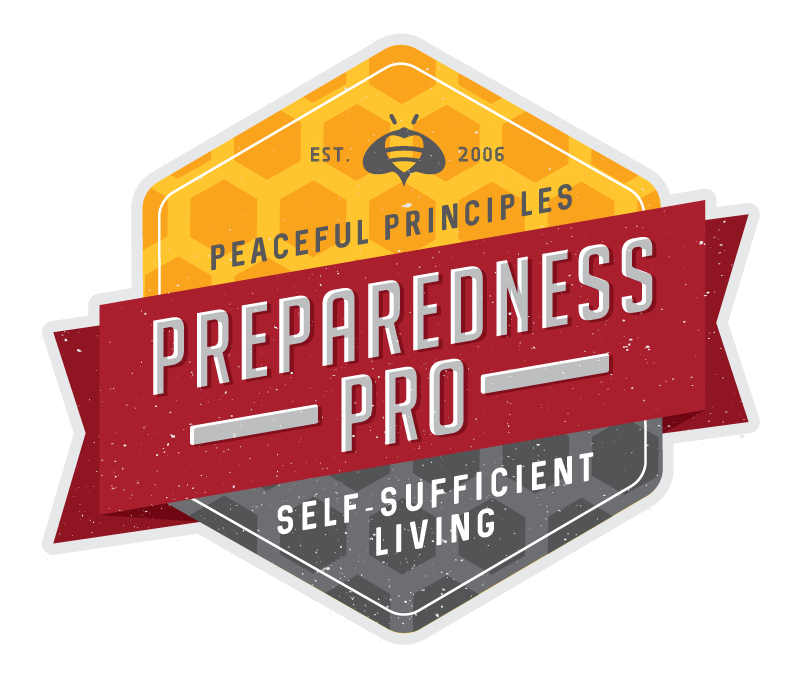
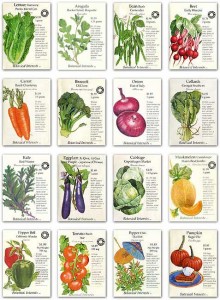
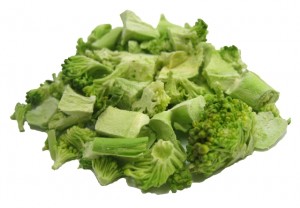
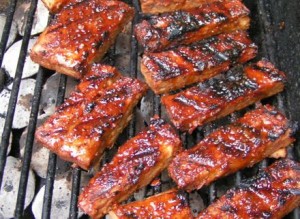
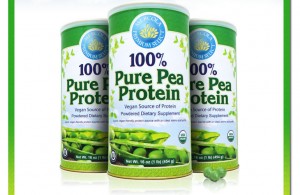

Comments
So is all meat at the grocery treated with ammonia?
I've been gardening for a while and getting more and more self reliant, in the summer. something to look into is the "four season harvest" by Eliot Coleman, it is about growing things in an unheated green house over the winter and eating seasonally so you don't have to can so much.
I'm not there yet but it is a goal of mine.
Here's what I do know. Treating meat with ammonia in order to help prevent e-coli is a standard practice. So much so that the beef industry fought hard with the USDA to get the ammonia called "filler processing" and not ammonia.
Oh yummy! I read the other day about fast food being that way. I wonder if they would know at the grocery store? If I can come up with the money next year I think I'm going to by a side of beef locally grown and processed, I think it is $2.15/pound, but it is 350 pounds or so.
It seems those things like organs, and things cannot be sold that go into the grinder. I won't say that's a fact. But it's kind of the jist of it. I don't know!!! I don't think anyone knows. That is frightening, I would push your local FDA/USDA guys. If that does not work, check out your local slaughter house. I don't know there is a good answer. Organic does not mean it was slauter safely.
I do know Ammonia is considered a processing agent on some beef. It is not on any ingredient list. USDA and EPA aproved.
I have heard that all gets thrown on the floor then an ammonia treatment and turned into hamburger. Not saying that's is the way it is, But If the EPA and the USDA signs off "they cool with that". I have problems with that.
I enjoyed this post and know I'm spoiled living in Alaska and eating all wild game and fish. In fact this year for the first time in years after an unsuccesful fall hunt my mom shiped me a 1/4 of a organic grain fed beef (wow it has a lot of fat which is delicious compared to wild game). But I do wonder if there are any studies on the quality of meat of wild game in the lower 48 states where they often graze on or near chemically treated fields. It's got to be better then beef, but I don't know? I'm planning on hunting in Texas next year and would keep all the meat and assumed it would be chemical free?
I did grow my first sprouts last week, inspired by you. Thanks
Thank you for you do to inform and educate us. Do you have a listing of the companies that sell freeze-dried vegetables and fruit, besides the camper's tiny packages. And do any of them offer certified organic? Thank you ahead of time.
Regards,
Charo
Gila, NM
At present there are NO companies that sell freeze-dried foods that are certified organice. That is why I consistently refer to them as being "cleaned" as opposed to organic. I recommend that folks go to either FiveStarPreparedness.com or Homestoragebasics.org primarily for the best pricing and the best variety of produce. I also trust the way that they are manufactured.
What's the difference between Diatomaceous earth, and Redmond clay?
there are huge differences. Probably too many for me to go through right here, but I'll tackle it in a future article. OK?
I'll be watching for it!
Thanks so much!
How do you take the diatomaceous earth? Do you sprinkle it on your cereal? Add it to juice? Where do you even find it??? Thank you for your wonderful blog!
I just mix it in my smoothie. There are a lot of folks who just dump it in their juice, etc. You can get it at most health food stores. However, you can get it much more affordably through fivestarpreparedness.com
Thanks for being with us!!
Glad that you are healthy again - great articles!
Dear Kellene,
I've been reading that soy products are actually bad for you. It seems the phytic acid in them causes them to bind to minerals in your body that are then excreted. One article I read referred to unfermented soy products as an "anti-nutrient" because of this. What is your take on it?
Thank so much for your terrific site. I'm learning a lot!
Nadine, I actually consume a great deal of soy and as such serious health issues have been rectified. I can completely appreciate that soy products are bad for folks now, but I suspect that it is because over 90% of the soy crops are now contaminated with genetically modified garbage. My firm believe is that soy in and of itself is not bad for you. But how it is processed sure is and thus can give folks a heck of a time. That's my two cents.
Hello Kellene, I was wondering if you could list the ingredients for the beef bouillon as they appear on the container. I checked the Five Star website and they don't seem to have a list of ingredients. I've been wanting to find MSG free bouillon but from doing research, have found out that even products that say they are MSG free aren't necessarily, as it can be "disguised" as other ingredients.
I would e-mail Five Star and ask them. The e-mail is [email protected]
The only "chemical name" that I recall being in there was matlodextrin. Everything else is flavors, corn oil, and spices as I recall.
How do you make the gluten?